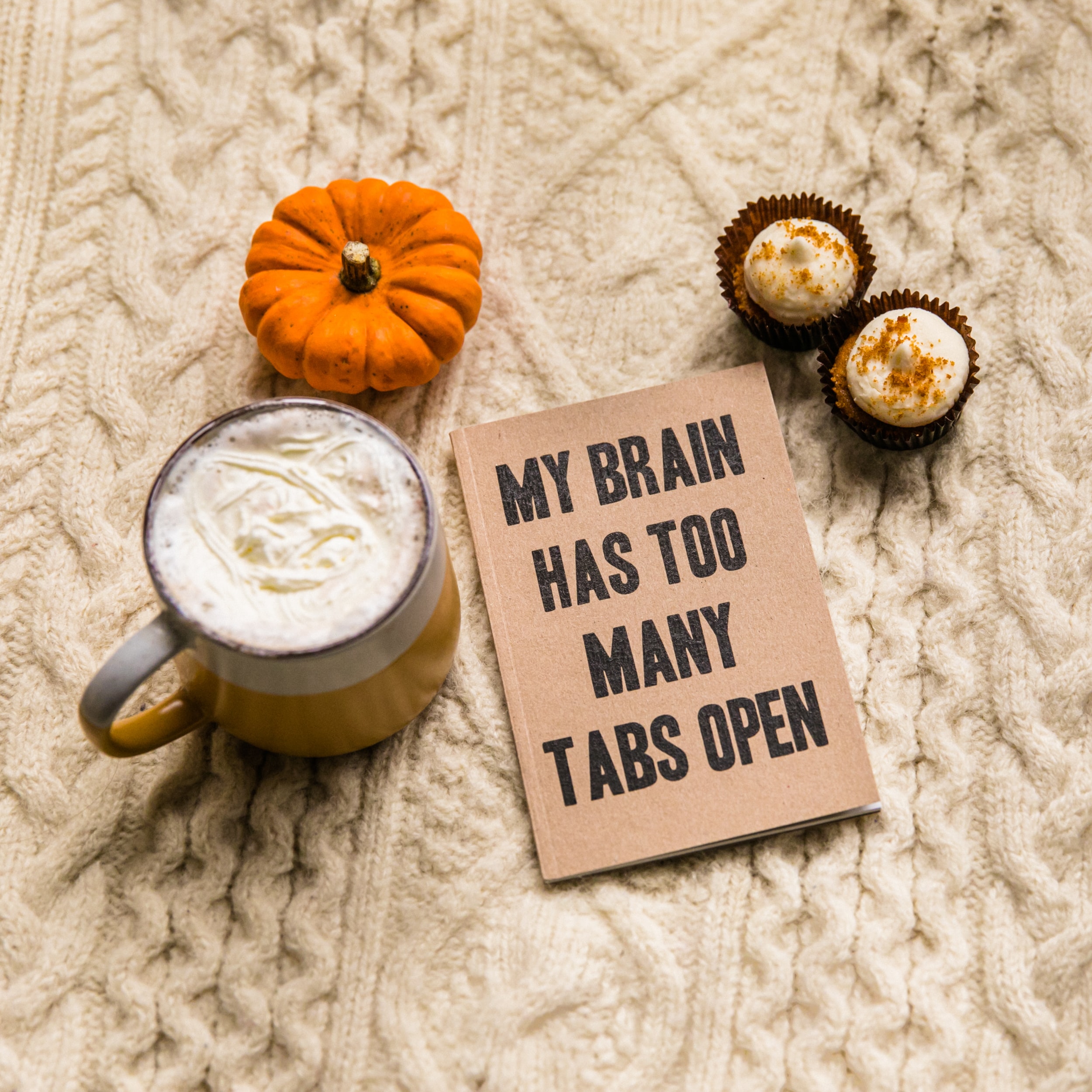Second Brain: Note-taking apps
What is the best app to manage all your notes, information, and plans?
I plan a lot. I take a lot of notes. Sometimes I make index notes to consolidate my other notes. Categorizing them into folders gives me a stronger dopamine hit than social media’s infinite scroll of short videos. Now that I’ve painted you a picture of how cool I am…

…let’s explore note-taking and personal knowledge management apps.
In my attempts to organize information, plan & review, and move information around, I moved from physical notebooks to paper + digital over the past few years. I started off with Google Docs, then moved on to Evernote. With some more research I discovered my fellow community of note-taking enthusiasts geeking out last year about Notion, Roam, RemNote, Obsidian and many more.
TL;DR (Spoiler Alert!): I did not find ONE app to rule them all. Most of these apps do not directly compete with one another across features. Each has their strengths and limitations. So if you are here looking for the single best app, I will ask you to check out Notion and Obsidian. They solve most of my needs with an impressive feature set, but they come with their own challenges. Figure out your use cases first. It may sound obvious, but that is undoubtedly the most critical step and primary takeaway from this post.
Understand the note-taking space better
Taking notes solves for the fundamental fallibility of the human memory. So you will often find users calling their note-taking app a “second brain”. Tiago Forte, an expert in this field of Personal Knowledge Management, talks about the Second Brain as “a methodology to save and systematically remind us of the ideas, inspirations, insights, and connections we’ve gained through our experience”. There is value in the very act of taking notes. The idea is to turn these running thoughts into actionable insights organically.
Why pay any attention to this space?
Did you know that the note-taking industry is a billion dollar market?
According to Verified Market Research, the Global Note-Taking Management Software Market was valued at USD 897.7 Million in 2018 and is projected to reach USD 1.35 Billion by 2026, growing at a CAGR of 5.32% from 2019 to 2026.
There are 20+ popular products in the market today, viz. OneNote, Evernote, Todoist, Google Docs, Dynalist, Notion, Coda, Roam Research, Obsidian, RemNote, etc. Their features and the core problem they attempt to solve differentiate them. One excels at being a minimal to-do list without frills, while another organizes your information in tables and views with logical formulas. It is hard to compare them directly. But almost all of them share the common goal of letting users write and organize information easily.
Feature Table for Comparison
You can collaborate and integrate third-party services over most of these apps. This is extremely useful for projects where you are working with others. But this article prioritizes Personal Knowledge Management use cases of an individual. Features available in the free tier therefore become even more important. In the table below, I run through 5 popular note-taking apps in 2021 and some of their key features. Depending on the OS you are on, I recommend you also check out OneNote (windows) or Notability (mac).
Disclaimer: Rising competition and innovation from new entrants and incumbents is rapidly improving the feature set. Apologies if the app or feature you swear by does not feature here today.
| KEY FEATURES | Notion | Obsidian | Roam* | Evernote | RemNote |
|---|---|---|---|---|---|
| Started in | 2016-18 | 2020 | 2017-20 | 2008 | 2020 |
| Cost | |||||
| Free Tier | Yes | Yes | No | Yes | Yes |
| Price (mid plan) | $4/mo | $25-50/one-time | $15/mo | INR 190/mo** | $6/mo |
| Price (top plan) | $8/mo | $50/year | $500/5 years | INR 500/mo** | $300/one-time |
| Availability | |||||
| Offline Access | Very limited features | Yes. Desktop only. | Yes | Yes. Desktop only. | Yes |
| Web App | Yes | No | Yes | Yes | Yes |
| Native Desktop App | Yes | Yes | No | Yes | No |
| Mobile App | Android - Yes iOS - Yes |
No. Beta Testing | Android - No iOS - No |
Android - Yes iOS - Yes |
Android - Yes iOS - No |
| Appearance | |||||
| WYSIWYG view | Yes | Markdown Preview | Yes | Yes | Yes |
| Custom Themes | No | Supports Custom CSS | Supports Custom CSS | No | Supports Custom CSS |
| Multiple editing panes | No | Yes | Yes | No | Yes |
| Making Notes | |||||
| Daily notes | Not native | Yes | Yes | No | Yes |
| Tables: Data Types, Sort etc. | Yes | No | No | No | No |
| Code Highlighting | Yes | Yes | No | No | Yes |
| Drag Positioning | Yes | No | Yes | No | Yes |
| Backlinks | Bit clunky + No Graph view |
Very easy + Graph view |
Very easy + Graph view |
Not native | Graph view needs Pro plan |
| Web Clipper | Yes | No | Yes | Yes | Yes |
| Publish to URL | Yes | Indirectly yes | No | Yes | Yes |
| Ease of Use | |||||
| Getting started (difficulty) | Easy to Moderate | Moderate | Easy to Moderate | Easy | Moderate to High |
| Community Discussions | Active Community | Active Community | Moderate | Low to moderate | Active Community |
| Community Knowledge Base | Template gallery | Core plug-ins & themes | Low | Low | Custom CSS themes |
| Real-time Collaboration | Yes | No | Yes | No | No |
| My Impression | |||||
| Pace of product improvement | Medium | Fast | Medium | Slow | Fast |
| Top 2 things I like | 1. Tables 2. Variety of options |
1. Bi-directional linking 2. Own and store data locally |
1. Bi-directional linking 2. Frictionless note-taking |
1. Scan handwritten notes 2. Simple to get started |
1. Flash cards 2. High student focus |
| Top 2 things I do not like | 1. Page load time slow 2. Limited offline access |
1. No drag & drop interface 2. Limited features |
1. Expensive 2. No native windows app |
1. Features and interface 2. Limited free tier |
1. Slow to load 2. Steeper learning curve |
| Overall Design Impression | Infinite possibilities | IDE-like interface and local storage | Free flow knowledge dump | Notes & Tags | Nested bullet points |
| Best suited for | Project & Life Management | Writers, Programmers | Creators, Researchers | Traditional note-taking | Students & Learners |
*Roam Research does not have a free tier. Features listed are in the paid plan.
**Evernote is the only one that offers lower India-specific pricing
I skipped few important features above because they all offer them. This includes features like text formats, attachments, search, tags, task lists, PDF export, note-sharing, dark mode, keyboard shortcuts, emojis, and more.
Once I listed down my use cases and workflow, I realized that the following features were most important to me:
Must have
- Rich feature set in free tier for personal use
- Clean and minimal design with extension capabilities (plugins, templates etc.)
- Tables to organize, manage, and review information and projects (In the workflow section below, I talk more about the PARA method that I use)
- Tables to aggregate numbers, and provision of different data types
- Easy to link between my notes
- Bookmark articles from browser (extension)
- Desktop app (native Windows)
Good to have
- Quick, responsive app with offline access
- Mobile app (Android and iOS) for my phone and iPad
- Lower switching cost (example: Notion has a nifty import from Evernote feature)
- Responsive user community forums
- Create basic graphs and charts from numbers in the table
- Typing and interacting with the interface should ‘feel’ good
Wishlist
- A single app to take care of all my Personal Knowledge Management use cases
- Collaborate with others (on free plan)
- Publish to URL (on free plan)
- Knowledge Graph View to visualize bi-directional links between notes
A single app did not cut it for me. But Obsidian and Notion together won on multiple parameters and helped me design the Personal Knowledge Management system I use today.
My Workflow

My overall solution today is a combination of Notion, Obsidian, and Google Suite. I prefer to use pen and paper while learning. This NPR research talks about the benefits of staying old school and taking notes by hand.
I mentioned earlier that figuring out your use case is the most critical step in note-taking. Understanding the needs and workflow helps you design a custom ‘system’ to manage all your projects and notes. But it is very easy to get caught up in a vacuous exercise of building the perfect system with the perfect tags and categories. Long story short, there is no perfect system.
This is when I came across the PARA Method by Forte Labs to organize information. It stands for Projects, Areas, Resources, and Archives. Tiago Forte suggests that these four top-level categories encompass every type of information you might encounter in your work and life.
This method may seem intimidating or very basic, depending on where you are in the journey of note-taking and personal knowledge management. The PARA method helped me move faster from designing the system to focusing on execution. I adapted the method to my needs and situation and evolved it over a few months.
My current system employs two specialized soldiers - a Project Manager (on Notion) and a pure Writer (on Obsidian).
The Project Manager
I use Notion to project manage different aspects of my life and break projects down into tasks. What I like the most about Notion is that it allows you to build very custom solutions for your use case with diverse building blocks.
Browse through the Notion Templates in this gallery to get an idea of the diversity of solutions you can build.
I use the tables and filtered views the most. This is roughly 80% of my use-case. I love that each row in a table is also a full-fledged page. Notion, as a company, deeply cares about design. This flows through into all areas of their product. It is a delight to make pages, add widgets, and write on Notion. It feels crisp and elegant. I also love that you can spin up a website out of any Notion page and publish it quickly. But they need to improve on load time of pages on their web, desktop, and mobile apps. Also, many features do not work offline. This is where Obsidian comes in.
The Writer
I use the Obsidian Desktop app for almost all my writing. This includes journaling, making detailed notes and linking between them, making daily plans, writing my blog drafts, etc. Writing in markdown makes it seamless to publish to my Jekyll powered blog (About the Site). The app is light, offline, and quick to load up. I reach faster to the page where I want to write. I categorize my notes across sections and vaults. The knowledge graph generated from backlinks is quite cool too. More objectively, I have written 5x more after moving to Obsidian. They have a mobile app running closed beta right now. Until this becomes available to all users, I need a light-weight mobile app.
Special Case: When I need to collaborate with others digitally, I go with Google Docs for writing and Google Sheets for Project Management. This is because most people are already familiar with the product. And the ones who are new, they find it easy and intuitive to pick up.
On the move
When I’m away from my laptop, I make my quick notes on Google Keep because it is super light (Notion is not!). This may be a random thought or insight, or a to-do item, or a grocery list. I transfer the relevant ones later to Notion or Obsidian. Once the Obsidian mobile app becomes available to all users, I will eliminate Google Keep from my workflow.
The information on Notion is available to me via the mobile and desktop app. Obsidian is a desktop app that renders markdown files from a folder that you point it to. I store these files in folders that are synced to the cloud. So this allows me to access to the information anywhere on any device.
Pen and Paper
The digital apps will not do away with my love for pen and paper. I schedule my day, prioritize tasks, and make some quick notes on paper. I also prefer making handwritten notes with diagrams while learning. Organizing this information and retrieving them later is difficult. I ordered a tablet with a stylus yesterday to transition this activity onto a digital platform. Too early to comment further here, but I imagine some of these notes will find its way to Obsidian as images.
Bonus: Migrate easy
If you already use some digital apps, you will want to migrate your old notes into your new system. If you have reached this far, I assume organizing information rocks your boat too. Switching cost is real. Check if the app you choose allows you to migrate all notes from your existing app(s) easily. This was a relief for me when I moved from Evernote to Notion. But it was not as straightforward either. It is a bonus if the app you choose allows you to export notes easily to migrate elsewhere in the future. You will thank yourself later.
Closing Thoughts
Let’s invoke the Pareto principle here too. Clearly defining your use cases, workflow, and priorities is the 20% input that will yield 80% of the results.
Your North Star should be to write, revisit, process, and use your notes in the future and apply in the right context. This is far more important than hoarding a lot of information.
Figure out
Do you need the app(s) to manage tasks and projects? Tables on Notion and Coda work well.
Do you need the app to make notes, learn, and revise information? Check out flash cards for spaced repetition and active recall on Anki and RemNote.
Do you need an offline Desktop app that is quick to work with? Check out Obsidian.
Is an online user-community important to you? Most of these apps have discussion forums on Discourse, Discord and/or Slack. Check the quality of the discussions there to get an idea.
How do you value utility vs design and aesthetics? Do you really need a mobile app? How important is it for you that the app is open-source and built transparently? Do you often need offline access?
These are some questions to get started. Customize them to your needs.
Use and Decide
Visualize your workflow, answer the questions you listed, and prioritize what matters more to you. While this theoretical exercise is useful, there is no data point more compelling than your own experience of using the products. Play around and understand where you thrive. Some products have a steeper learning curve at the start, while some may seem extremely simple. I would not place too much value on the initial impression. Instead, try to implement your workflow and system with each of the products you shortlist. Give it a few days. Pick the one where you thrive the most. Be mindful that the app and your needs also evolve.
There is no ONE app to rule them all

Over time, I have become relatively app agnostic with organizing information. Evernote served me well for many years, despite its challenges. RemNote with its flash cards felt promising, but I did not enjoy the interface. Obsidian and Notion are the winners right now, despite its points of friction. Switching cost is real. This entire exercise becomes self-defeating if you spend lesser time writing and executing on tasks and more time finding the best app and designing the best system.
Most of the note-taking apps are evolving rapidly. So my recommendation is to find the path of least resistance to implement your workflow and overall system. I’m a fan of ‘set it & forget it’. Design the system and review it once a year. Shift your focus entirely on getting things done.
Happy writing and planning! Hope your second brain turns your ideas into reality.
I’d love to hear from you. What are your primary use cases? What applications do you use? Why did you choose them? Comment below!